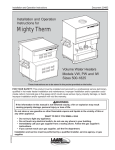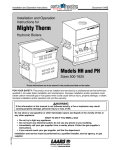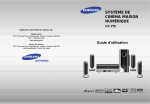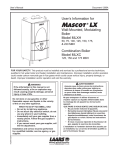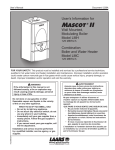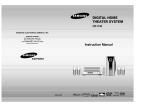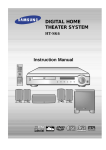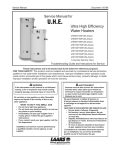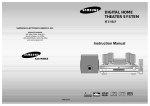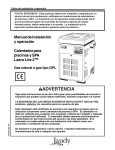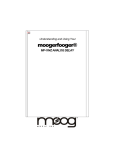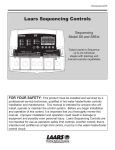Download Mighty Therm
Transcript
Installation and Operation Instructions Document 1065D Installation and Operation Instructions for Mighty Therm Model HH Sizes 2000-5000 Hydronic Boilers FOR YOUR SAFETY: This product must be installed and serviced by a professional service technician, qualified in hot water heater installation and maintenance. Improper installation and/or operation could create carbon monoxide gas in flue gases which could cause serious injury, property damage, or death. Improper installation and/or operation will void the warranty. WARNING If the information in this manual is not followed exactly, a fire or explosion may result causing property damage, personal injury or loss of life. Do not store or use gasoline or other flammable vapors and liquids in the vicinity of this or any other appliance. WHAT TO DO IF YOU SMELL GAS • Do not try to light any appliance. • Do not touch any electrical switch; do not use any phone in your building. • Immediately call your gas supplier from a nearby phone. Follow the gas supplier's instructions. • If you cannot reach your gas supplier, call the fire department. H0147600D Installation and service must be performed by a qualified installer, service agency, or gas supplier. A subsidiary of BRADFORD WHITE Corporation LAARS Heating Systems Page 2 TABLE OF CONTENTS SECTION 1. General Information 3C. 3D. 1A. 1B. 1C. 1C-1. SECTION 4. Maintenance 1C-2. 1D. Introduction ................................................... 3 Flow Requirements ...................................... 4 Variable Water Flow Systems ...................... 4 A Special Note About 3-Way Water Valves ................................................ 5 System Pressure Requirements ................... 5 Warning Regarding Chilled Water Systems ............................................. 5 SECTION 2. Installation 2A. 2B. 2B-1. 2B-2. 2C. 2D. 2E. 2F. 2G. 2H. Boiler Placement .......................................... 5 Installation of Indoor Boilers ......................... 6 Combustion Air Supply ................................. 6 Venting ......................................................... 7 Installation of Outdoor Heater ....................... 7 Freeze Protection ......................................... 8 Gas Supply and Piping ................................. 8 Electrical Wiring ............................................ 9 Piping of System to Boiler ............................ 9 Filling Fully-Connected System .................. 10 SECTION 3. Operation 3A. 3B. Initial Start Up ............................................. 10 To Start Up System .................................... 11 To Turn Off Boiler ....................................... 12 To Shut Down System ................................ 12 ................................................................... 12 SECTION 5. Troubleshooting and Analysis of Service Problems ................................................................... 13 SECTION 6. Conversion of VW from Indoor to Outdoor Models ................................................................... 15 SECTION 7. Parts Description and Order Numbers ................................................................... 18 Mighty Therm Hydronic Boiler SECTION 1. General Information IMPORTANT WARNING: The Model HH hydronic boiler must be installed in accordance with the procedures outlined in this manual. Warranty does not apply to boilers not installed or operated in accordance with these procedures. Consult local building and safety codes before proceeding with work. The installation must conform to the requirements of the authority having jurisdiction or, in the absence of such requirements, to the latest edition of the National Fuel Gas Code, ANSI Z223.1 and/or in Canada, CAN1-B149 requirement. When required by the authority having jurisdiction, the installation must conform to American Society of Mechanical Engineers safety code for controls and safety devices for automatically fired boilers No. CSD-1, and in Canada, CGA3.3. Any modification to the boiler, its gas controls, gas orifices, wiring or draft diverter may void the Laars warranty. If field conditions require such modifications, consult Factory. Indoor Page 3 1A. Introduction This manual provides information for the installation and operation of Laars boilers. It is strongly recommended that all application and installation procedures be reviewed completely before proceeding with the installation. Consult the factory, or local factory representative, with any problems or questions regarding this equipment. Experience has shown that most operating problems are caused by improper installation. Model HH boilers are offered in two configurations: An indoor version and an outdoor version. The indoor version is convertible for outdoor use with the installation of a conversion kit as described in Section 6 of this manual. The two configurations are shown in Figure 1. Some accessory items are shipped in separate packages. Verify receipt of all packages listed on the packing slip. Inspect everything for damage immediately upon delivery, and advise the carrier of any shortages or damage. Any such claims should be filed with the carrier. The carrier, not the shipper, is responsible for shortages and damage to the shipment whether visible or concealed. Outdoor When boiler is ordered with stage or modulated control and sales order states it is to be used on a variable flow system, the temperature controller is factory installed in the outlet water. Figure 1. Boiler Configuration. LAARS Heating Systems Page 4 1B. Flow Requirements All low volume hydronic boilers must have continuous flow through the heat exchanger when firing, for proper operation. The system pump must be capable of developing sufficient pressure to overcome the resistance of the boiler plus the entire circulating system at the designated GPM (see Table 1). The temperature rise across the boiler should never exceed 40° F. NOTE: Water entering boiler should be 105°F minimum. Convectors Baseboards or Fan Coils Fan Coils Zone Valves 1C. Variable Water Flow Systems Heating systems using zone valves, zone pumps or 3-way valves can experience reduced water flow through the boiler. This can result in an excessive water temperature rise and unstable boiler operation. If system water flow is variable, it must not be allowed to fall below 30% of full flow. The boiler must be equipped with staged or modulated fire with the temperature sensor installed in the outlet water. State variable flow when ordering. Laars recommends primary-secondary pumping for all variable flow systems. Primary-secondary pumping is mandatory for variable flow systems where minimum flows are less than 30% of full flow conditions. The boiler pump in a primary-secondary system maintains constant flow through the boiler even though the system flow is variable. In a primary-secondary system the pressure drop of the boiler is not added to the system (see Figure 2). 20°F Compression Tank Pump (Location varies with model) 12" Max. System Pump Unit Figure 2. Primary-Secondary System. 25°F 30°F 35°F Size (I) Size (E) GPM H/L GPM H/L GPM H/L GPM H/L 20001P 2P 24501P 2P 30501P 2P 35001P 2P 40501P 2P 45001P 2P 50001P 2P ----------22001P 2P 28001P 2P 32001P 1P 36001P 2P 40001P 2P 45001P 2P 164 164 201 201 250 * 284 * 332 * 369 * 410 * 3.91 10.5 5.9 16.4 9.3 * 12.0 * 17.2 * 21.75 * 27.0 * 131 131 161 161 200 200 230 * 266 * 295 * 328 * 3.6 7.4 3.9 10.2 5.9 16.4 8.7 * 11.9 * 13.2 * 16.8 * 109 109 134 134 167 167 189 189 222 222 246 * 273 * 1.8 4.9 3.8 7.7 4.5 12.5 5.7 16.8 8.1 24.0 10.0 * 13.0 * 94 94 115 115 143 143 164 164 190 190 211 211 234 * 0.7 3.0 2.3 5.7 3.8 8.5 3.9 10.5 5.8 16.0 7.0 20.0 9.0 * HIGH NORMAL LOW * Not recommended, consult factory. I=Indoor, E=Outdoor. GPM=Water flow. H/H=Pressure drop (head loss)through the boiler, expressed in Ft. of H20. 1P=Single-pass heat exchanger. 2P=Two-pass heat exchanger. Shaded area is the recommended flow and temperature rise. Table 1. Water Flow, Temperature Rise and Pressure Drop. Mighty Therm Hydronic Boiler Page 5 1C-1. A Special Note About 3-Way Water Valves 3-way water valves (2 position or proportional) are sometimes used to divert water around a boiler and control the temperature of water being supplied to the system. Valves installed in this manner must be supplied with an end switch or some other suitable control to shut off the boiler when the flow is reduced to 30%. The boiler must be supplied with staged or modulated fire as indicated in Section 1C, Variable Water Flow Systems. It is often possible to accomplish excellent water temperature control without 3-way valves through proper application of staged or modulated firing systems. Consult the factory or local Laars representative for assistance with such systems. 1C-2. System Pressure Requirements The Model HH boilers are designed to operate on closed, pressurized systems. A minimum of 12 psi should be maintained on the system where boiler supply water temperatures are 200°F or less. If higher temperatures are required, the minimum system pressure should be at least 15 psi above the water vapor pressure corresponding to the elevated water temperature. The Model HH boilers are not suitable for open systems unless the supply water temperatures are kept below 180°F, and a minimum of 5 psi static head is maintained at the boiler. 1D. Warning Regarding Chilled Water Systems When a boiler is connected to an air conditioning system where the same water is used for heating and cooling, chilled water must be prevented from entering the boiler. When changing such a system from cooling to heating, the chilled water should be allowed to circulate through the building after the chiller has been turned off long enough for the water to warm up to at least 70°F before the water is allowed to flow into the boiler. It is equally important to prevent hot water from entering the chiller. The system shown in Figure 3 is suggested to make sure that the system water is neither too hot nor too cold when a changeover from heating to cooling, or vice versa, takes place. When a boiler is connected to heating coils located in air handling units (where they may be exposed to refrigerated air circulation), the boiler piping system shall be equipped with a flow control valve or other automatic means to prevent gravity circulation of chilled water through the boiler. Chilled water in the boiler will create condensate on the boiler tubes which will drip on the burners and may extinguish the pilot. Boilers installed in violation of either of the above requirements may void the warranty. SECTION 2. Installation 2A. Boiler Placement The boiler must be placed to provide clearances on all sides for maintenance and inspection. There must also be minimum distances maintained from combustible surfaces. All boilers must be installed on a noncombustible floor. Under no circumstances can boilers be installed on carpeting. The National Fuel Code allows a boiler to be placed on a combustible surface when such an installation complies with the local codes. This code specifies the surface under the boiler be protected with hollow masonry no less than 4" thick, covered with sheet metal at least 20 Ga. in thickness. Such masonry Suggested Wiring Diagram For Tempering System Water at Changeover from Heating to Cooling Clock Timer Auto-resetting Set at 15 minute SPDT DPDT Manual or Automatic Change-over Switch DPDT - Set at Change-over Temperature 115/24V Transformer From Chiller To Boiler and Chiller Valve Motors 2-Pos 3-Wire - 24V By-pass From Boiler From System To System 3-Way Valve No. 1 Change-over (Heating and Cooling) 3-Way Valve No. 2 To By-pass Both Heater and Chiller Figure 3. Boiler-Chiller Installation. Clearance From Top Water Connection Side Opposite Side Front Rear Vent Indoor (Inches) Outdoor (Inches) 24 24 24 48 24 6 — 24 24 48 24 — Table 2. Minimum Clearances from Combusible Surfaces. LAARS Heating Systems Page 6 must be laid with ends unsealed, and joints matched in such a way as to provide a free circulation of air from side to side through the masonry (see Figure 4). 2B. Installation of Indoor Boilers 1. 2. 2B-1. Combustion Air Supply The boiler location must provide sufficient air supply for proper combustion, and ventilation of the surrounding area as outlined in the latest edition of ANSI standard Z223.1, and/or in Canada CAN1-B149 requirement, and any local codes that may be applicable. Inadequate combustion air supply may result in incomplete combustion and consequent sooting of the heat exchanger and unsafe operation of the boiler. In general, in the U.S., these requirements specify that boiler rooms, which represent confined spaces, should be provided with two permanent air supply openings communicating directly through the wall to outside air; one within 12 inches of the ceiling, the other within 12 inches of the floor. Each opening should have a minimum free area of one square inch per 4,000 BTUs/H input rating of all appliances in the enclosed area. See Table 3 for recommended air supply for each model. An improperly ventilated equipment room can get excessively hot and cause accelerated deterioration of controls and electrical components. Base Must Extend Out Min. 12" On All Sides Of Heater Frame Metal Plate 20 Ga. Min. Under Entire Heater NOTE: In Canada (Table 3 does not apply) consult local building and safety codes or, in the absence of such requirements, follow CGA requirement, and/or CAN1-B149 standard. 3. Exhaust Fans or Vents: Any equipment which exhausts air from the boiler room can deplete the combustion air supply or reverse the natural draft action of the venting system. This could cause flue products to accumulate in the boiler room. Additional air must be supplied to compensate for such exhaust. The information in Table 3 is not applicable in installations where exhaust fans or blowers of any type are used. Such installations must be designed by qualified engineers. 4. If a blower or fan is used to supply air to the boiler room, the installer should make sure it does not create drafts which could cause nuisance shutdowns of the pilot. If a blower is necessary to provide adequate combustion air to the boiler, a suitable switch or equivalent must be wired into the boiler control circuit to prevent the boiler from firing unless the blower is operating. 5. The boiler must be completely isolated and protected from any source of corrosive chemical fumes such as emitted by trichlorethylene, perchlorethylene, chlorine, etc. Indoor Size Each Opening* (Square Inches) 2000 2450 3050 3500 4050 4500 5000 500 613 763 875 1013 1125 1250 Net Free Area in Square Inches* Concrete Blocks Or Tile Min. 7" High With 3" Min. Air Openings Blocks must provide solid base and be braced so they cannot slip out of place. Air openings in blocks must be arranged to provide unobstructed opening through entire width or length of base. Figure 4. Non-combustible Base. *Area indicated is for one of two openings; one at floor level and one at the ceiling, so the total net free area would be double the figures indicated. For all other conditions, refer to latest edition of ANSI Bulletin Z223.1. NOTE: Check with louver manufacturers for Net Free Area of louvers. Correct for screen resistance to the Net Free Area if a screen is installed. Check all local codes applicable to combustion air. Table 3. Minimum Recomended Air Supply To Boiler Room. Mighty Therm Hydronic Boiler 1. 2B-2. Venting Laars boilers have built-in draft diverters for natural draft operation and must not be connected into any portion of a mechanical draft system under positive pressure. The flue outlet must be connected to a clear, unobstructed vent of adequate capacity terminating above the highest point of the building with an approved vent cap. The venting system should be installed according to the latest edition of ANSI Z223.1 and any local codes having jurisdiction and/or in Canada follow CAN1-B149 standard. IMPORTANT NOTE: Do not use sheet metal screws at the snap lock joints of Type B gas vents. 2. 3. 4. Do not weld or fasten the vent pipe to the boiler draft hood. The weight of the stack must not rest on the boiler. The draft hood and boiler top must be easily removable for normal boiler service and inspection. Avoid long horizontal runs of the vent pipe, and too many 90° elbows, reductions and restrictions. Horizontal runs should have at least a ¼" rise per foot in the direction of flow. A vent connector shall be supported for the design and weight of the material employed to maintain clearances and prevent physical damage and separation of joints. Avoid terminating boiler vents near air conditioning or air supply fans. The fans can pick up exhaust flue products from the boiler and return them inside the building, creating a possible health hazard. A minimum of 4 feet horizontal distance must be maintained from electric meters, gas meters, and relief equipment. Page 7 5. 6. 7. Always use double-wall or insulated vent pipe (Type B or equivalent). In cold weather, uninsulated outside vents can chill the rising flue products, blocking the natural draft action of the venting system. This can create a health hazard by spilling flue products into the boiler room. Avoid oversize vent piping or extremely long runs of the pipe which may cause excessive cooling and condensation. Rule of Thumb: The total length of the vent, including the connector and any offset, should not exceed 15 feet for every inch of vent diameter. Longer total lengths shown in venting tables are based on maximum capacity, not condensation factors. When the installation of a draft fan is necessary in the venting system to which a Laars boiler is to be connected, the installation should be engineered by competent personnel following good engineering practices. The draft fan supplier should be consulted for correct size. The installation should be in accordance with the latest edition of ANSI Z223.1 and any local codes having jurisdiction, in Canada follow CAN1-B149 standard. When a draft fan is installed, a suitable draft switch must be used and wired into the boiler control circuit at terminal designated “Field Interlock,” to prevent firing of the boiler unless a positive draft has been established (see Figure 5). 2C. Installation of Outdoor Boilers Caution Outdoor installations are not recommended in areas where the danger of snow blockage exists. 1. 2. Locate the boiler to provide the minimum clearances as listed in Section 2A, “Placement of Boiler.” Do not locate the boiler in an enclosure or wall recess. Avoid location where wind deflection off structures might cause down draft. When such Window Or Grill G N RO W Indoor Room Figure 7. Method of Installing a Tee Sediment Trap. Figure 6. Incorrect Outdoor Installation of Boiler. LAARS Heating Systems Page 8 3. wind conditions are possible, locate the boiler at least three (3) feet from the structures. Never install the boiler under any kind of roof overhang. Do not locate the boiler below or adjacent to any doors, windows, louvers, grills, etc. which communicate in any way with an inhabited area of a building. Even though such communication might be through another structure such as a garage or utility room (see Figure 6). 4. 5. The boiler and its individual shutoff valve must be disconnected from the gas supply piping system during any pressure testing of that system at test pressures in excess of ½ psig. The boiler must be isolated from the gas supply piping system by closing its individual manual gas shutoff valve during any pressure testing of the gas supply piping system at test pressures equal to or less than ½ psig. Provide gas supply pressure to the boiler as follows: 2D. Freeze Protection Natural Gas LPG Boiler installations are not recommended in areas where the danger of freezing exists unless proper precautions are made for freeze protection. Maintaining a mixture of 50% water and 50% ethylene glycol is the preferred method of freeze protection for hydronic systems. This mixture will protect the boiler to temperatures of about -35°F. To get the desired temperature rise across the boiler when this mixture is used, increase the G.P.M. flow recommended for water by 15%. Increase the head loss requirement by 20%. Note: The boiler and all other gas appliances sharing the boiler gas supply line must be firing at maximum capacity to properly measure the inlet supply pressure. Low gas pressure could be an indication of an undersize gas meter and/or obstructed gas supply line. 2E. Gas Supply and Piping 6. Review the following instructions before proceeding with the installation. 1. Verify that the boiler is fitted for the proper type of gas by checking the rating plate. Laars boilers are normally equipped to operate below a 2000 foot altitude. Boilers equipped to operate at higher altitudes have appropriate stickers or tags attached. 2. Use the figures in Table 4 to provide adequate gas piping (check local code for BTU capacity required). 3. A trap (drip leg) must be provided ahead of the gas controls (see Figure 7). Where required by code, provide a second manual gas shutoff valve. Do not remove manual valve furnished with the boiler. Gas Supply Inlet To Equipment Inlet Tee Fitting Nipple 3" Min. Min. (inches water column) Max.(inches water column) 7. 7 9 11 14 The correct burner manifold gas pressure is stamped on the rating plate. The regulator is preset at the factory, and normally requires no further adjustment. The gas manifold and control assembly was tested and conform to the safe lighting and other performance criteria specified in the latest editions of ANSI Z21.13 and CGA 3.3 Low Pressure Boiler Standard. Distance from Gas Meter or Last Stage Regulator Indoor Size Outdoor Size 0-100' Nat. Pro. 100-200' Nat. Pro. 200-300' Nat. Pro. 2000 ------ 2½ 2 3 2½ 3 3 2450 2200 3 2½ 3 2½ 3½ 3 3050 2800 3 2½ 3½ 3 3½ 3 3500 3200 3 2½ 3½ 3 4 3½ 4050 3600 3½ 3 4 3½ 4 3½ 4500 4000 3½ 3 4 3½ 5 4 5000 4500 4 3½ 4 3½ 5 4 NOTES: These figures are based on 1/2" water column pressure drop. Cap Check supply pressure and local code requirements before proceeding with work. Pipe fittings must be considered when determining gas pipe sizing. Figure 7. Method of Installing a Tee Sediment Trap. Mighty Therm Hydronic Boiler 8. Page 9 Before operating the boiler, the complete gas supply system and all connections must be tested for leaks using a soap solution. Do not use raw flame. Caution Since some leak test solutions, including soap and water, may cause corrosion or stress cracking, the piping must be rinsed with water after testing, unless it has been determined that the leak test solution is noncorrosive. 1. Check boiler wiring and pump for correct voltage, frequency and phase. If the pump circuit is other than 115V, check to see that the boiler is provided with an appropriate transformer. 2. Wire the boiler and pump exactly as shown in the wiring diagram supplied with the boiler. 3. The pump and boiler must be electrically interlocked so the boiler cannot come on unless the pump is running. 4. All field installed electrical safety devices and all field installed devices (draft switches, relays, timers, outdoor temperature reset devices, etc.) can be connected to the boiler wiring at points shown in the wiring diagram designated “Field Interlock.” Arrangement of gas train components for on-off, 2-stage and 4-stage firing are shown schematically in the Gas Piping Diagram (see Figure 8). 2F. Electrical Wiring (electrical diagrams are included with the packet provided with each unit) WARNING The boiler must be electrically grounded in accordance with the most recent edition of the National Electrical Code, ANSI/NFPA 70 and, in Canada, follow Canadian Electrical Code CSA C22.1. Do not rely on the gas or water piping to ground the metal parts of the boiler. Many times, plastic pipe or dielectric unions isolate the boiler electrically. Service and maintenance personnel who work on or around the boiler may be standing on wet floors and could be electrocuted by a poorly grounded boiler. Note: Main Gas Valves Incorporate Gas Pressure Regulators Pilot Gas Valve** 2G. Piping of System to Boiler 1. Be sure to provide gate valves at the inlet and outlet to the boiler so it can be readily isolated for service. 2. The pressure relief valve must be installed in the tapped opening provided in the boiler header with its outlet piped to a drain or floor sink. Special attention must be given to relief valve settings in installations where the boiler is located on the ground floor of a tall building, or where the operating temperature of the boiler is above 210°F. In both instances, the static pressure of the system is elevated, and could cause the relief valve to leak and bring considerable raw water into the system. Where no special setting of the relief valve is ordered, the factory will furnish a 125 psi setting. Never reduce the relief valve opening. If necessary, install the relief valve in a Tee immediately past the boiler outlet. 3. A boiler installed above radiation level must be provided with a low water cutoff device either as part of the boiler or at the time of boiler installation (see Figure 9). 4. Install manual and/or automatic bleeding devices at high points in the system to eliminate air. Install a correctly sized expansion or compression tank with suitable air charger and tank drainer, as appropriate. 5. The weight of all water and gas piping should be supported by suitable hangers or floor stands. 6. Check piping diagrams with local applicable plumbing, heating and building safety codes. Pilot Gas Filter Pilot Gas Pressure Regulators To Pilot Pilot Gas Valve** To Pilot B Manual Pilot Gas Valve Main Gas Valve† A Manual Gas Valve Safety Solenoid Valve(s) To Main Burners Hi-Pressure Switch* Main Gas Valve† To Main Burners * Standard on sizes 3050-5000 (AGA models). ** Sizes 2000 & 2450 use one pilot gas valve. † Sizes 2000, 2450 & 3050 with on-off or two stage fire, use one main gas valve. LAARS Heating Systems Page 10 2H. Filling Fully-Connected System 1. Close all bleeding devices and open make-up water valve. Allow system to fill slowly. 2. If make-up water pump is employed, adjust pressure switch on pumping system to provide a minimum of 12 psi at the highest point in the heating loop. 3. 4. If a water pressure regulator is provided on the make-up water line, adjust the pressure regulator to provide at least 12 psi at the highest point in the heating loop. Open bleeding devices on all radiation units at the high points in the piping throughout the system, unless automatic air bleeders are provided at such points. 5. Run system circulating pump for a minimum of 30 minutes with the boiler shut off. 6. Open all strainers in the circulating system and check for debris. 7. Recheck all air bleeders as described in Step 4. Check liquid level in expansion tank. With the system full of water and under normal operating pressure, the level of water in the expansion tank should not exceed ¼ of the total, with the balance filled with air. 9. Start up boiler according to procedure described in Section 3A. Operate the entire system, including the pump, boiler, and radiation units for one (1) hour. 10. Recheck the water level in the expansion tank. If the water level exceeds ¼ of the volume of the expansion tank, open the tank drainer and drain to that level. 11. Shut down the entire system and vent all radiation units and high points in the system piping as described in Step 4. 12. Close make-up water valve and check strainer in pressure reducing valve for sediment or debris from the make-up water line. Reopen make-up water valve. 13. Check gauge for correct water pressure and also check water level in the system. If the height indicated above the boiler insures that water is at the highest point in the circulating loop, then the system is ready for operation. 14. Within three (3) days of start-up, recheck all air bleeders and expansion tank as described in Steps 4 and 8. Air Changer and Tank Drainer Make-up Water Supply Compression Tank Check Valve Method 2 To Drain Pressure Reducing Valve 8. SECTION 3. Operation 3A. Initial Start Up Method 1 Blow Down Valve To Drain To System Strainer Pump Thermometer Temperature and Pressure Gauge Lighting: Safe lighting and other performance criteria were met with the gas manifold and control assembly provided on the boiler when it underwent tests specified in the ANSI Z21.13 standard. Before placing the boiler in operation, the automatic safety shutoff devices must be checked. Once the boiler is connected to the gas piping and after all of the requirements in Section 2 have been met, follow this procedure: 1. Before beginning the tests, make sure the main manual gas valve, and any other boiler firing valves, are in the OFF position. 2. Make sure the power switch on the boiler is in the “ON” position. After placing the manual pilot valves in the open position, and resetting all safety devices (high limit, pressure switch, low water cutoff, etc.), pilots can be lit following the procedure located on the boiler rating plate. Notes: Select Method 1 or 2 when using Low Water Cutoff accessory: 1. Under Method 1, the Low Water Cutoff is furnished by Laars and shipped as a separate item for field installation. 2. Under Method 2, Electronic Low Water Cutoff is installed, wired and tested on boiler in Laars factory. 3. Preferred location of system pump is shown. Compression tank must always be on suction side of pump. Figure 9. Boiler Piping. Mighty Therm Hydronic Boiler 3. Once the pilots are lit and have been established for five minutes, the flame failure response time should be checked as follows: System 16: (Electronically supervised standing pilot system standard on propane gas) Extinguish the pilot flame by placing the manual pilot valve in the closed position, and, at the same time, begin recording the time it takes for the output signal from the electronic ignition control to be interrupted. Refer to the electrical drawing supplied with the boiler for wiring details. The signal interruption can be detected either with a test light or a voltmeter. Because the ignition controls are in series, the control just upstream of the gas valves should be tested first. Under no circumstances should the response time exceed 5 seconds. System 18: (Intermittent ignition supplied only for natural gas) With this system, pilots are automatically lit when the thermostat calls for heat. The pilots are permitted a trial period for ignition, then the system is locked out if it fails to light. To retry ignition, power to the boiler must be momentarily interrupted. After the pilot is initially lit, the trial for ignition time should be checked by turning off pilot gas, and, at the same time, monitoring the time it takes for the audible sparking at the pilot burner to stop. Under no circumstances should the trial for ignition exceed 15 seconds. Because the electronic ignition controls are in series, the control just upstream of the gas valves should be tested first (refer to the electrical drawing supplied with the boiler). Once the trial for ignition period has been checked, the controls should be reset and the flame failure response time checked by following the procedure given for system 16. 4. With the pilots lit, initial activation of the main burners can be achieved by slowly opening the main manual valve. The result should be a smooth lighting of the main burners. Hi-Limit Checkout After running the boiler for a long enough period to bring the water temperature within the range of the hi-limit, slowly back off the high limit setting until the boiler shuts off. The main burners should reignite when the hi-limit is turned back up to its original setting. The high limit should now be reset and the boiler run until it shuts off automatically on high limit. Now that all tests of the safety shutoff devices have been completed, refer to Section 3B for the proper settings of temperature controls. Page 11 3B. To Start Up System (See Section 3A for Initial Startup) 1. Start up boiler: a. Be certain system pump is running. b. Lighting instructions are provided on the boiler rating plate and in the User’s Manual and are as follows: 1. Turn off main electrical switch. 2. Turn off all manual gas valves and wait five minutes. 3. Set aquastat or thermostat to lowest setting. 4. Slowly turn manual gas valve to ON. 5. Reset all safety valves (pressure switch and manual reset high limit). 6. Open manual pilot valve. Turn on main electrical switch. 7. Set temperature controller to desired temperature. Pilot will light automatically to ignite main burners whenever the thermostat calls for heat. 8. The low firing rate setting must be equal to or greater than the specified minimum input rating as shown on the appliance rating plate. For example, size 2450 has a specified minimum input of 735,000 BTUs/hr. The unit's input rate must not be below this value (refer to rating plate). Laars boilers use gas valves which are factory set to provide an input on low fire that meet or exceed the specified minimum. 2. Set temperature controls: Boilers on constant flow will have the temperature controller bulb located in the boiler inlet and the high limit sensing bulb in the boiler outlet. Boilers on variable flow will have both the temperature control sensing bulb and the high limit sensing bulb located in the boiler outlet. When boiler is installed on a constant water flow system, set temperature controller at the designed system supply temperature less the temperature drop in the system. Set the high limit switch 30°F above the supply temperature to the system. When boiler is equipped with staged or modulated fire and installed on a variable flow system, set temperature controller at the designated system temperature. Set the high limit switch 30°F above the supply temperature to the system. LAARS Heating Systems Page 12 3C. To Turn Off Boiler 1. Turn off main electrical switch. 2. Close all manual gas valves. 3D. To Shut Down System To shut down boiler, turn off all manual gas valves and electrical disconnect switch. Whenever danger of freezing exists, shut off water supply and remove drain plug in bottom of front header cover and drain every part of system subject to freezing temperatures. SECTION 4. Maintenance 1. If a strainer is employed in a pressure reducing valve or in the piping, clean it every six (6) months. 2. At start-up and every six (6) months thereafter, the pilot and main burner flame should be observed for proper performance (see Figure 9 and 10; see attached lighting and shutdown instructions for proper pilot flame pattern). If flame has the appearance of “sooting” tips, check for debris near orifices. Call service technician. 3. Inspect the venting system for obstruction, leakage, and corrosion at least once a year. 4. Keep boiler area clear and free from combustible material, gasoline and other flammable liquids and vapors. Boiler surfaces are hot and could ignite combustible material. Pilot (P/N W0034500) 5. Be certain all combustion air and ventilation openings are unobstructed. 6. Check for fouling on the external surfaces of the heat exchanger every six months. NOTE: After installation and first start-up, check the heat exchanger for fouling after the following periods of operation: 24 hours, 7 days, 30 days, 90 days, and once every six months thereafter. Fouling on the external surfaces of the heat exchanger is caused by incomplete combustion, and is a sign of combustion air and/or venting problems. As soon as any fouling is observed, the cause of the fouling should be corrected (see Section 5 Troubleshooting). The heat exchanger can be checked with a flashlight by locating a mirror under the burners. An alternate method is to remove the venting and top panel as necessary to inspect from above. Also, check the vent system for defects at the same time. a. If cleaning is required, shut off all electrical and gas supply to the boiler. b. To expose the heat exchanger: Remove top panel covers located at the base of the front and rear flue collector panels. Remove all but the top screws on each side of the front and rear flue collector panels. The panels can be swung outward and propped up to reveal the heat exchanger. Remove all heat exchanger baffles. c. Remove all burners: Caution Black carbon or green soot on a dirty heat exchanger can, under certain conditions, be ignited by a random spark or open flame. To prevent this unlikely occurrence, dampen the soot deposits with a wet brush or fine water spray before servicing or cleaning the heat exchanger. C/L 4th Port Burner A Top View Figure 10. Pilot Location. Front View of Boiler Observation Hole View On Arrow A Figure 11. Periodic Flame Observation. Burner Mighty Therm Hydronic Boiler Page 13 With a wire brush, remove soot and loose scale from the heat exchanger. Do not use water or compressed air for cleaning. Clean fallen debris from the bottom of the boiler. Check that burner ports are clear and pilot assembly is free of debris. d. 7. b. c. Reassemble in reverse order: Be sure to replace the heat exchanger baffles. The gas and electric controls installed on the boilers are designed for both dependable operation and long life. But the safety of this equipment depends completely on their proper functioning. It is strongly recommended that the basic items be checked by a competent service technician every year, and replaced when necessary. The basic controls are: 2. Electric meter(s) with the following ranges: 0 to 500 volts A.C. 0 to 1000 ohms continuity. Millivolt meter with the following ranges: 0 to 50 millivolts. 0 to 500 millivolts. 0 to 1000 millivolts. d. Tube cleaning kit consisting of reamer, stainless steel brush, speed handle and handle extensions. e. Boiler thermometer (with 1/2" NPT well) 100-240°F. In addition, the boiler should be equipped with a system pressure gauge and a thermometer with proper ranges for boiler operation. a. Water temperature controls. b. Pilot safety system. c. Automatic electric gas valve(s). d. Flow sensing safety device (when used). 8. Both modulating and staged valves are adjusted at the factory for minimum permissible rates, and should not be readjusted. SECTION 5. Troubleshooting and Analysis of Service Problems 1. Possible Cause For proper service and problem diagnosis of the boiler and boiler system, the following tools are required: a. Gas pressure test kit with range from zero to 14" W.C. Either a slack tub manometer or an accurate gas pressure gauge is acceptable with proper adaptors which will connect to the available fittings in the line and on the gas valve. What To Do A. Electric power is off. A. Check to see that main power. switch is “ON.” Use testing device to trace power to heater junction box. B. Operating or safety control has opened circuit to electric gas valve. B. Turn off power. Use continuity across terminals of each operating and safety control switch up to the electric gas valve. Replace defective control. C. Pilot flame is out. C. Relight pilot per instruction. D. Manual reset device has tripped. D. Follow instructions for startup. Reset pilot safety and all manual reset safety switches and reset manual safety gas valve. E. No gas pressure to burners. E. Trace gas line to service shutoff cock. If service cock is open, trace gas line to meter. If no pressure is present at meter, call for public utility service. If gas is present in boiler inlet, check pressures in following sequence: (1) downstream from pressure regulator. (2) downstream from electric gas valve. Replace or adjust as necessary. Low water cutoffs should be inspected every six (6) months, including flushing or float types. NOTE: Warranty does not cover any damage caused by lack of required maintenance or improper operating practices. 9. 3. Boiler will not fire. F. Electric gas valve operator is F. Disconnect wiring harness at burned out or shortened. gas valve terminals. Check continuity to actuator coil. If open circuit or short is indicated, replace coil or operator. LAARS Heating Systems Page 14 4. Boiler is pounding, Knocking or emitting steam from relief valves. Possible Cause A. Low or no water flow. What To Do A.This condition is usually caused by lack of adequate water flow through boiler. Check the following: 1. Is the heater wired into the pump circuit so that the boiler cannot fire unless the pump is running? 2. Check to see that all valves in system are open to be sure that water can circulate through the boiler and the system. 3. If the system has automatic water valves (2-way or 3-way) that can cut off the water flow through the boiler check to see that they are equipped with end-switches which shut the boiler down when the water flow through the boiler is reduced by 70% from full flow. Also be sure that manual bypasses are provided around two-way zone valves where necessary in order to assure 15% of full flow through the boiler at all times. 4. Examine pump for clogged impeller 5. Water flow through the system may be impeded by air locks at high points. Residual oil in system tends to collect at high points and clog automatic air vents. Be sure that all high points are adequately vented. B. Low or no system pressure B.Check for inoperative water makeup valve or pump. Also clean strainer in pressure reducing valve which furnishes makeup water. Look for closed valve in makeup water line or a leak in the system. C. Clogged “Y” strainer. C.Remove strainer element and clean screen. D. Debris from system piping is D.Remove header covers. blocking tubes. Examine all tubes and waterways. Use new gaskets when reassembling. Clean out tubes. E. Scale has formed in tubes. E.This is always caused by the inflow of raw water into the system. Check for leak in system, especially at pump packing. Check for waterlogged expansion tank. This condition will cause water to discharge through the relief valve every time the boiler fires and permits raw water to enter the system every time it cools down. Drain expansion tank. 5. Pressure relief valves leaking intermittently or steadily. Possible Cause What To Do A. Static pressure in system A.Calculate height of water in exceeds setting of relief valve. system above boiler. Install new valve with psi setting 25% above required static system working pressure. Do not exceed 160 psi. B. Expansion tank is waterlogged. B.Drain expansion tank, then reopen it to the system. Look for leaks in expansion tank or fittings. Calculate required volume of expansion tank in relation to system to determine that tank is adequate. C. Valve between system and expansion tank is closed. C.Open valve so that pressure in system will be open to tank. 6. Soot in flueways or in tubes, or noxious fumes indicative of bad combustion. Possible Cause What To Do A. Combustion air supply to heater room is inadequate. A. Check air supply opening. Look for debris in screen or louvre which covers combustion air opening, or for material blocking the opening. B. Stack or vent is blocked or restrictive. B. Look for blocked stack and excessive number of elbows in stack or excessive length of horizontal runs. C. Severe down draft is causing spillage of flue products into room. C. Check for (1) proper vent cap on stack; (2) adequate height of stack above roof; (3) equipment exhausting air from inside of building; and (4) setting on the barometric damper if applicable and (5) proper installation of draft diverter. D. Gas pressure to burners is excessive. D. Check gas pressure with manometer, and adjust with heater firing at full rate. E. Boiler not fitted for the fuel being supplied E. See nameplate for correct fuel. F. Boiler installed at high altitude without proper derating. F. Installations at altitudes in excess of 2000 ft. above sea level are subject to jurisdiction of the local inspection authorities. G.Water entering boiler is 105°F G.Add balancing valves if needed to raise entering temperature. Mighty Therm Hydronic Boiler Page 15 Outdoor Kit Parts List (see Figure 13) 7. Water dripping in firebox. Possible Cause What To Do A. If boiler is used with an air conditioning system, chilled water may be flowing either by gravity or pressure through boiler and creating condensation on boiler tubes. A.Install flow-check valve or programmed bypass valve in the system for change-over from heating to cooling. B. Tube in heat exchanger has overheated and ruptured. B.A tube failure always caused by (a) scale formation in the tube or (b) inadequate water flow through the boiler. SECTION 6. Conversion of Series HH Boilers from Indoor to Outdoor Model Please read the following instructions with Figure 12. Figure 13 shows the conversion completed. Please follow the instructions in their numerical order, failure to do this will cause problems on assembly. 1. Remove top panel, (1) (see Figure 12). 2. Remove front and rear upper panels, (2) (see Figure 12). 3. Remove front and rear wings LH & RH, (3) (see Figure 12). 4. Remove diverter assembly, (4) (see Figure 12). 5. Remove outer screw from upper end panel at junction with lower end panel. Key No. Part No. 5 ............................................................................. 20017100 6 ............................................................................. 20016900 7 ............................................................................. 20015101 ............................................................................... 20015102 8 ............................................................................. 20016700 9 ............................................................................. 20017200 10 ........................................................................... 20017300 11 ........................................................................... 20017700 12 ........................................................................... 20016500 13 ........................................................................... 20016600 14 ........................................................................... 20016300 15 ........................................................................... 20014301 ............................................................................... 20014302 16 ........................................................................... 20015200 17A Left Front Baffle (Single Inlet Manifold) ......... 20022200 17B Right Front Baffle (Single Inlet Manifold) ....... 20022300 17C Left Front Baffle (Split Inlet Manifold) ............ 20022000 17D Right Front Baffle (Split Inlet Manifold) ......... 20022100 18 ........................................................................... 20014601 ............................................................................... 20014602 19 ........................................................................... 20016100 20 ........................................................................... 20018000 21 ........................................................................... 20016200 22 ........................................................................... 20017200 23 ........................................................................... 20017600 24 ........................................................................... 20018200 25 ........................................................................... 20018300 26 ........................................................................... 20018600 27 ........................................................................... 20015001 ............................................................................... 20015002 28 ........................................................................... 20016800 1 2 3 4 Figure 12. Removal of Indoor Parts. Page 16 Figure 13. Outdoor Parts Identification. LAARS Heating Systems Mighty Therm Hydronic Boiler 5. Remove outer screw from upper end panel at junction with lower end panel. 6. Remove and disconnect all probes and wires going to castings and gas train. 7. Remove control box assembly - front of boiler (not shown). Page 17 12. Install middle rear panel. (13) 13. Install front panel making sure opening for removable panel is square. (19) 14. Install front stiffener size 2450 and up. Section 2 (See Figure 13) 1. 2. Install front LH & RH extension panels (flush with top of upper end panel), (18). Install rear LH & RH extension panels (flush with top of upper end panel). (15) (pick up holes provided into LB upper and lower end panels) 3. Install front bottom panel. (21) 4. Install rear bottom panel. (14) 5. Install front inner baffles [2] 4" from ends. (17) 6. Install rear inner baffle [1] 2" from ends. (16) 7. Install front LH & RH upper spacers. (27) 8. Install rear LH & RH upper spacers. (7) 9. Install front flue collector extension (screw onto flange of lower flue collector only). (28) 10. Install rear flue collector extension (screw onto flange of lower flue collector only). (8) 11. Install rear upper panel and remaining screws from flue collector extension. (12) 15. Install remaining screws from flue collector extension. 16. Install rear top half. (5) 17. Install front top half. (6) 18. Install front wire (26) mesh using angle (24) at top and strap (25) at bottom (mesh to be inserted under angles of wind baffle stand offs). 19. Install rear mesh same as Step 18. 20. Install front LH & RH wind baffle stand off. (23) 21. Install rear LH & RH wind baffle stand off. (23) 22. Install front and rear wind baffles. (22) 23. Install middle rear baffle stand off. (11) 24. Install middle rear baffle. (10) 25. Install wires control box parts onto control panel (not shown). 26. Install control panel assembly using holes and bushings provided in RH extension panel for probes and wires (not shown). 27. Install door panels. (20) LAARS Heating Systems Page 18 SECTION 7. Parts Description and Order Numbers Key No. Description Size 2000 I Size 2450 I 2200 E Size 3050 I 2800 E Size 3500 I 3200 E Size 4050 I 3600 E Size 4500 I 4000 E Size 5000 I 4500 E 1. Base Weldment Assembly 20067201 20067202 20067203 20067204 20067205 20067206 20067207 2. Base Assembly 20011001 20011002 20011003 20011004 20011005 20011006 20011007 3. Center Heat Shield Assembly 20005701 20005702 20005703 20005704 20005705 20005706 (2) 20005707 (2) 3a. Center Heat Shield Panel 20005601 20005602 20005603 20005604 20005605 20005606 (2) 20005607 (2) 4. End Tile Rail Support Assembly (left) 20011101 20011101 20011101 20011101 20011101 20011101 20011101 4a. End Tile Rail Support Assembly (right) 20011102 20011102 20011102 20011102 20011102 20011102 20011102 5. 20064301 20064302 20064201 20064202 20064401 20064402 20064501 20064502 20064600 20064600 20064700 20064700 20064800 20064800 6a. Main Burner Assembly Pilot Burner Bracket 20012600 20012600 20012600 (2) 20012600 (2) 20012600 (2) 20012600 (2) 20012600 (2) 6b. Main Burner (without pilot bracket) L2005800 (22) L2005800 (27) L2005800 (32) L2005800 (37) L2005800 (44) L2005800 (48) L2005800 (54) 7. Inner Shield 20002300 (2) 20002300 (2) 20002300 (2) 20002300 (2) 20002300 (2) 20002300 (2) 20002300 (2) 8. End Tile Channel 20002600 (2) 20002600 (2) 20002600 (2) 20002600 (2) 20002600 (2) 20002600 (2) 20002600 (2) 9. Front Lower Closure 20004301 20004302 20004303 20004304 20004305 20004306 20004307 10. Rear Tile Rail Assembly 20011401 20011402 20011403 20011404 20011405 20011406 20011407 11. Front Tile Rail Assembly 20011301 20011302 20011303 20011304 20011305 20011306 20011307 12. Rear Closure Assembly 20012401 20012402 20012403 20012404 20012405 20012406 20012407 13. Heat Shield Support Bracket 20003201 (2) 20003202 (2) 20003203 (2) 20003204 (2) 20003205 (2) 20003206 (2) 20003207 (2) 14. Tile Heat Shield Assembly 20012101 (2) 20012102 (2) 20012103 (2) 20012104 (2) 20012105 (2) 20012106 (2) 20012107 (2) 15. Lower Panel Assembly F&R 20011601 (2) 20011602 (2) 20011603 (2) 20011604 (2) 20011605 (2) 20011606 (2) 20011607 (2) 16. Tile Cover 20005801 (2) 20005802 (2) 20005803 (2) 20005804 (2) 20005805 (2) 20005806 (2) 20005807 (2) 17. Saddle Assembly End Tile 10533601 (2) 10533601 (2) 10533601 (2) 10533601 (2) 10533601 (2) 10533601 (2) 10533601 (2) Manifold Assy. Single Manifold Assy. Split 18-19. Tile Assembly See Tile Drawing on Page 20 20. Center Support Assembly 20004900 20004900 20004900 20004900 20004900 20004900 20004900 21. Heat Exchanger Assembly 20001301 20001302 20001303 20001304 20001305 20001306 20001307 21a. Gasket, Header S0095300 S0095300 S0095300 S0095300 S0095300 S0095300 S0095300 21b. Water Barrier 10397500 10397500 10397500 10397500 10397500 10397500 10397500 21c. Double Pass Header 10416200 10416200 10416200 10416200 10416200 10416200 10416200 I=Indoor, E=Outdoor Quantity is one unless otherwise indicated. Mighty Therm Hydronic Boiler Figure 14. Parts Identification. Page 19 LAARS Heating Systems Page 20 Key No. Description Size 2000 I Size 2450 I 2200 E Size 3050 I 2800 E Size 3500 I 3200 E Size 4050 I 3600 E Size 4500 I 4000 E Size 5000 I 4500 E 21d. Gasket, Flange S0095600 (2) S0095600 (2) S0095600 (2) S0095600 (2) S0095600 (2) S0095600 (2) S0095600 (2) 21e. Flange 10417400 (2) 10417400 (2) 10417400 (2) 10417400 (2) 10417400 (2) 10417400 (2) 10417400 (2) 21f. Cap Screw-Hex. Hd. 1/2" - 13UNC x 2" F0024500 (8) F0024500 (8) F0024500 (8) F0024500 (8) F0024500 (8) F0024500 (8) F0024500 (8) 21g. Return Header 10416100 10416100 10416100 10416100 10416100 10416100 10416100 21h. Gasket, Header S0095300 S0095300 S0095300 S0095300 S0095300 S0095300 S0095300 21j. Cap Screw-Hex. Hd. 1/2" - 13UNC x 1 1/2" F0013300 (36) F0013300 (36) F0013300 (36) F0013300 (36) F0013300 (36) F0013300 (36) F0013300 (36) 21k. Washer - 1/2" F0010300 (36) F0010300 (36) F0010300 (36) F0010300 (36) F0010300 (36) F0010300 (36) F0010300 (36) 22. Lock Washer - 3/8" F0010800 (2) F0010800 (2) F0010800 (2) F0010800 (2) F0010800 (2) F0010800 (2) F0010800 (2) 23. Washer - 3/8" F0011100 (2) F0011100 (2) F0011100 (2) F0011100 (2) F0011100 (2) F0011100 (2) F0011100 (2) 24. Cap Screw 3/8" - 16UNC x 3/4" F0015900 (2) F0015900 (2) F0015900 (2) F0015900 (2) F0015900 (2) F0015900 (2) F0015900 (2) 25. Heat Exchanger Baffle Assembly 20010900 (68) 20010900 (68) 20010900 (68) 20010900 (102) 20010900 (102) 20010900 (102) 20010900 (102) 26. Heat Exchanger Baffle F & R 10534310 (2) 10534311 (2) 10534312 (2) 10534313 (2) 10534314 (2) 10534315 (2) 10534316 (2) 27. Front & Rear Closure 20006401 (2) 20006402 (2) 20006403 (2) 20006404 (2) 20006405 (2) 20006406 (2) 20006407 (2) 28. Inside Baffle Assembly Indoor Inside Baffle Assembly Outdoor 20012501 N/A 20012502 20012509 20012503 20012510 20012504 20012511 20012505 20012512 20012506 20012513 20012507 20012514 29. Flue Panel Assembly F&R 20011501 (2) 20011502 (2) 20011503 (2) 20011504 (2) 20011505 (2) 20011506 (2) 20011507 (2) 30. Upper Panel F & R (indoor only) 20011701 (2) 20011702 (2) 20011703 (2) 20011704 (2) 20011705 (2) 20011706 (2) 20011707 (2) 31. Flue Diverter Assembly (indoor only) 20012201 20012202 20012203 20012204 20012205 20012206 20012207 32. Upper Wing F & R, Left (indoor only) 20006301 (2) 20006301 (2) 20006301 (2) 20006301 (2) 20006301 (2) 20006301 (2) 20006301 (2) 33. Upper Wing F & R, Right (indoor only) 20006302 (2) 20006302 (2) 20006302 (2) 20006302 (2) 20006302 (2) 20006302 (2) 20006302 (2) 34. Top Panel Assembly (indoor only) 20012301 20012302 20012303 20012304 20012305 20012306 20012307 35. Flue End Assembly 20012000 (2) 20012000 (2) 20012000 (2) 20012000 (2) 20012000 (2) 20012000 (2) 20012000 (2) 36. Upper End Assembly 20011900 (2) 20011900 (2) 20011900 (2) 20011900 (2) 20011900 (2) 20011900 (2) 20011900 (2) 37. Lower End Panel Assembly 20011800 (2) 20011800 (2) 20011800 (2) 20011800 (2) 20011800 (2) 20011800 (2) 20011800 (2) 38. Control Mounting Panel 20013700 20013700 20013700 20013700 20013700 20013700 20013700 39. Control Cover - Front 20018700 20018700 20018700 20018700 20018700 20018700 20018700 40. Control Box Cover Top 20011200 20011200 20011200 20011200 20011200 20011200 20011200 I=Indoor, E=Outdoor Quantity is one unless otherwise indicated. Mighty Therm Hydronic Boiler Figure 15. Tile Assembly. Page 21 LAARS Heating Systems Page 22 Key No. Description Size 2000 I Size 2450 I 2200 E Size 3050 I 2800 E Size 3500 I 3200 E Size 4050 I 3600 E Size 4500 I 4000 E Size 5000 I 4500 E 20035403 20035403 20035403 (2) 20035403 (2) 20035403 (2) 20035403 (2) 20035403 (2) Pilot Lead Assembly (Honeywell) Standing Pilot, Nat/Propane 20035404 20035404 20035404 (2) 20035404 (2) 20035404 (2) 20035404 (2) 20035404 (2) Pilot Lead Assembly (Johson) IID Pilot, Nat 20035401 20035401 20035401 (2) 20035401 (2) 20035401 (2) 20035401 (2) 20035401 (2) Pilot Lead Assembly (Honeywell) IID Pilot, Nat 20035402 20035402 20035402 (2) 20035402 (2) 20035402 (2) 20035402 (2) 20035402 (2) 42. Pilot Shield 20016400 20016400 20016400 (2) 20016400 (2) 20016400 (2) 20016400 (2) 20016400 (2) 43. Draft Hood Relief Baffle - Right (indoor only) 20013801 (2) 20013801 (2) 20013801 (2) 20013801 (2) 20013802 (2) 20013803 (2) 20013804 (2) 44. Draft Hood Relief Baffle - Right (indoor only) 20013805 (2) 20013805 (2) 20013805 (2) 20013805 (2) 20013806 (2) 20013807 (2) 20013808 (2) 45. Manual Valve V0001800 V0001800 V2013800 V2013800 V2013800 V2013900 V2013900 46. Safety Valve V0046800 V0046800 V0046900 V0046900 V0046900 V2000500 V2000500 47. Operating Valve V0051400 V0051400 V2001000 V0051400 (2) V0051400 (2) V0051400 (2) V0051400 (2) 48. Manual Pilot Valve W0002100 W0002100 W0002100 (2) W0002100 (2) W0002100 (2) W0002100 (2) W0002100 (2) 49(a). Pilot Valve (I.I.D.) (not shown) W0019300 W0019300 W0019300 (2) W0019300 (2) W0019300 (2) W0019300 (2) W0019300 (2) 49(b). Pilot Relay (Standing Pilot) W003000 W003000 W003000 (2) W003000 (2) W003000 (2) W003000 (2) W003000 (2) 50. Pilot Burner (Johnson) Standing Pilot, Nat W0034700 W0034700 W0034700 (2) W0034700 (2) W0034700 (2) W0034700 (2) W0034700 (2) W0034800 W0034800 W0034800 (2) W0034800 (2) W0034800 (2) W0034800 (2) W0034800 (2) W0034600 W0034600 W0034600 (2) W0034600 (2) W0034600 (2) W0034600 (2) W0034600 (2) W0034400 W0034400 W0034400 (2) W0034400 (2) W0034400 (2) W0034400 (2) W0034400 (2) W0034500 W0034500 W0034500 (2) W0034500 (2) W0034500 (2) W0034500 (2) W0034500 (2) W0034300 W0034300 W0034300 (2) W0034300 (2) W0034300 (2) W0034300 (2) W0034300 (2) 41. Pilot Lead Assembly (Johnson) Standing Pilot, Nat/Propane Pilot Burner (Honeywell) Standing Pilot, Nat 51. Pilot Burner (Johnson) Standing Pilot, Propane Pilot Burner (Honeywell) Standing Pilot, Propane 52. Pilot Burner (Johnson) IID Pilot, Nat Pilot Burner (Honeywell IID Pilot, Nat I=Indoor, E=Outdoor Quantity is one unless otherwise indicated. Mighty Therm Hydronic Boiler Page 23 H0147600D 800.900.9276 • Fax 800.559.1583 (Customer Service, Service Advisors) 20 Industrial Way, Rochester, NH 03867 • 603.335.6300 • Fax 603.335.3355 1869 Sismet Road, Mississauga, Ontario, Canada L4W 1W8 • 905.238.0100 • Fax 905.366.0130 www.Laars.com Litho in U.S.A. © Laars Heating Systems 0805 Document 1065D

























